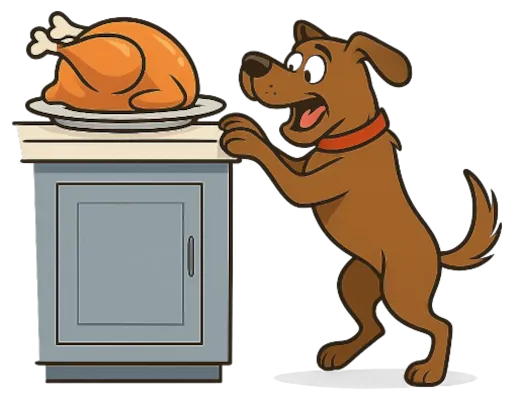
Why Your Dog Isn't Being Naughty Even When It Looks Like It!
Why Your Dog Isn’t Being Naughty Even When It Looks Like It!

Picture this. You've just arrived home from an exhausting trip to your local Tesco. You're thinking of that lovely blackberry and apple tea you've just bought and maybe a sneaky slice of the luxury carrot cake before the kids get home from school.
You unlock the door, walk in, and... carnage!
Fido's been up to his tricks again, and the one cushion you didn't put up on the dining room table is in tatters in the middle of the rug.
"Oh, you naughty thing!" you yell, or words to that effect.
I hear you. I've been there. But I also know that dogs don't do 'naughty'.
Dogs Don’t Do Naughty?
No, they don’t have a concept of right and wrong the way we do. They're not intent on revenge when you don't share your Custard Cream, they're not plotting to overthrow the government for increasing the tax on their treats and they certainly don't set out to destroy your furniture because you chose a trip to the supermarket over sofa snuggles with them.
Dogs behave in ways that make sense to them. Everything your dog does is communication.
Whether he's chewing, jumping, barking or digging up Great Aunt Mable's favourite rose bush, he's not being naughty, he's being a dog.
All Behaviour Is Communication
And it's up to us to learn to understand what our dogs are saying. After all, we're the humans in the human world. We understand it (well sometimes). They don't.
At Happy Humans, Happy Hounds, we believe dogs are always telling us something. The problem is, we often misunderstand the message.
We’d never ignore a baby crying or a friend looking upset. But with our dogs, we forget to ask, "What is s/he trying to say?"
Next time your dog does something unexpected, try this:
Take a deep breath: Pause before reacting.
Ask yourself: What might my dog be trying to tell me?
Meet the need: Are they hungry? Anxious? Overexcited? Tired? Is the environment too stimulating?
Set calm, consistent boundaries. Not through shouting or punishment, but through calm, loving leadership they can rely on.
But What About That Disembowelled Cushion?
Your dog wasn't being naughty, he was trying to self-soothe. Chewing releases dopamine and serotonin, neurotransmitters that relieve stress and lift mood.
If your dog struggles with anxiety when left alone, let's chat to see how I can help you and your dog?
